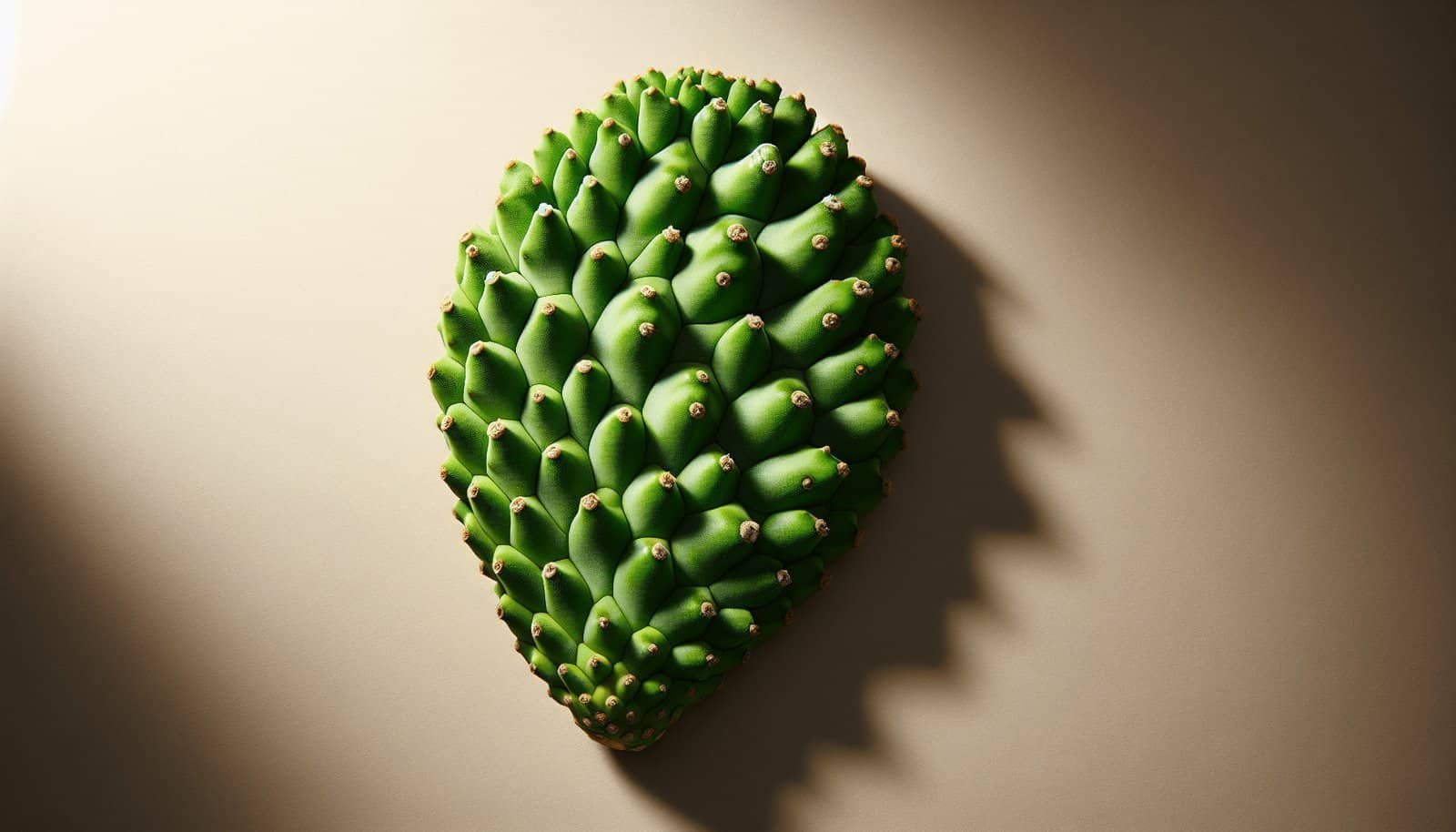Have you ever wondered how you can preserve nopal, also known as prickly pear cactus, to enjoy it year-round? Freezing is an excellent way to make sure you have this nutrient-rich food at your fingertips whenever you need it. Whether you’re a seasoned nopal enthusiast or new to the world of cactus cuisine, this guide will walk you through the steps to prepare nopal for freezing, ensuring that it retains its flavor and nutritional value.

Understanding Nopal
Before diving into the preparation process, it’s crucial to understand a bit about nopal itself. With its paddle-shaped branches covered in spines, nopal might seem intimidating at first. However, the fleshy pads are full of vitamins, minerals, and fiber, making them a valued ingredient in many dishes. Fresh nopal is often used in salads, tacos, and even as a side dish, but preserving it through freezing can extend its usability well beyond its typical growing season.
Benefits of Nopal
Nopal is not just a versatile ingredient; it comes with a plethora of health benefits. Rich in antioxidants, vitamins A and C, potassium, magnesium, and calcium, incorporating it into your diet can enhance digestive health, improve blood sugar levels, and provide anti-inflammatory effects. Knowing these benefits might give you even more incentive to freeze and store nopal for future culinary endeavors.
Selecting Nopal for Freezing
The quality of your frozen nopal starts with choosing the right pads for preservation. You want to select pads that are young and tender, usually appearing bright green and small in size. Older, larger pads tend to be tough and less flavorful, which might not yield the best results after freezing.
Inspecting for Freshness
Check for any blemishes, spots, or signs of fungi on the pads. It’s imperative to start with clean, healthy nopal pads to ensure the frozen product is as fresh and tasty as possible. Fresh pads have a glossy sheen and should be firm to the touch.
Preparing Nopal for Freezing
Once you’ve gathered your nopal pads, it’s time to prepare them for freezing. This involves cleaning, trimming, and blanching the pads to ensure they freeze well and maintain their quality.
Cleaning and Trimming
Begin by washing the nopal pads thoroughly under running water to remove any dirt or residue. Be careful and use gloves to handle them—those spines can be sharp! Use a small, sharp knife to carefully trim away the edges and spines, ensuring the pads are safe to handle and eat. After this trimming, rinse the pads another time to make sure all the spines are removed.
Slicing the Pads
Once your nopal pads are clean and spineless, slice them into manageable pieces. Most people prefer to cut them into strips, cubes, or even small rectangles, depending on how they plan to use them later. The key is to maintain uniform pieces that will defrost and cook evenly.
Blanching
Blanching is a crucial step in preserving the color, texture, and nutritional content of your nopal. Bring a large pot of water to a rolling boil and add your nopal pieces for about 2-3 minutes. Immediately transfer them into an ice bath to stop the cooking process. This method helps preserve the flesh and prepares the nopal for freezing without losing much of its nutrient content or flavor.
Freezing Nopal
After you’ve properly cleaned, trimmed, sliced, and blanched your nopal, it’s time to move on to the freezing process. This stage is pivotal as it helps maintain the integrity of the nopal until you’re ready to incorporate it into your meals.
Drying the Nopal
Before placing your nopal pieces in the freezer, make sure to remove any excess moisture. Lay the blanched nopal on paper towels or a clean cloth and gently pat them dry. Remove as much surface water as possible to prevent ice crystals from forming during freezing.
Portioning and Packaging
Consider the portion sizes you’ll use when cooking. It’s often helpful to freeze nopal in meal-sized portions so you only defrost what you need. Use freezer-safe bags or airtight containers, labeling them with the date to monitor their storage time. Remove as much air as possible from the bags before sealing them.
Freezing Method
Arrange your nopal pieces in a single layer in the container or bag before placing them in the freezer. This arrangement prevents them from sticking together, making it easier to grab just the right amount for your cooking needs later.

Defrosting and Using Frozen Nopal
When you’re ready to enjoy your preserved nopal, proper defrosting is essential to ensure it maintains its quality and texture.
Thawing Techniques
The best way to thaw frozen nopal is by placing it in the refrigerator overnight. This method ensures a gradual thaw that helps retain the nopal’s structure and moisture. Alternatively, if you’re in a hurry, you can defrost it in the microwave, though this may slightly affect the texture.
Cooking with Frozen Nopal
Once thawed, you can use nopal almost the same way you would with fresh pads. Sautee them with onions, mix them in scrambled eggs, or blend them into salsas. The possibilities are vast and varied, allowing you to leverage the preserved goodness in numerous dishes.
Troubleshooting Common Issues
Sometimes, the process may not go as smoothly as anticipated. Here are some common issues you might encounter and tips on how to deal with them.
Ice Crystal Formation
If you notice ice crystals forming on your frozen nopal, it’s often due to excess moisture before freezing or air inside the storage bag. To avoid this, ensure that your nopal is pat-dry and you’ve removed as much air from the container or bag as possible.
Texture Changes
If your thawed nopal feels mushy, it’s likely due to rapid freezing and thawing. Ensuring a gradual defrost and properly blanching the nopal before freezing can help maintain a better texture.

Caring for Frozen Nopal Long-term
To maintain your nopal’s flavor and nutritional content over longer periods, keep these guidelines in mind.
Monitoring Storage Conditions
Ensure your freezer maintains a consistent temperature (ideally 0°F or -18°C) for optimal preservation. Fluctuations can lead to freezer burn, affecting the taste and texture.
Recommended Storage Time
For best quality, stored nopal should be used within 6-12 months, depending on the storage conditions. While they may still be edible beyond this timeframe, some quality degradation is inevitable.
Understanding Nopal Variations
Nopal is a popular ingredient in many cuisines, but it’s important to note that not all cacti are created equal. While you are likely dealing with the widely cultivated nopales, there are over 100 species of the Opuntia family of cacti. Local variations might suit different cooking styles and palates, but the basic preparation and freezing techniques can be applied across the spectrum.
Choosing the Right Recipes
Several traditional recipes make excellent use of nopal, such as nopal salads mixed with tomatoes, onions, and cilantro. You might also try them lightly fried with scrambled eggs, or as an ingredient in stews and soups. Freezing nopal helps you keep these options open all year round, adapting to both traditional and inventive culinary approaches.

Aprovechar Nopal in Diverse Dishes
Once you’re comfortable with freezing and thawing nopal, it’s time to make the most out of this versatile ingredient. You can explore cuisines that embrace nopal, such as Mexican, where it often serves as a staple ingredient.
Mexican-Inspired Dishes
Nopal is a fantastic fit for tacos, where its slightly tart flavor pairs wonderfully with salsas, meats, or cheeses. You can also incorporate it into quesadillas or enchiladas for an extra pop of color and nutrition.
Health-Conscious Meals
Using frozen nopal in smoothies or salads can be a refreshing start to your day. It enhances your meals not only with its unique flavor but also with its vast array of nutrients, making it a guilt-free addition to any health-focused diet.
Embrace Sustainable Eating with Nopal
Incorporating nopal into your diet is not only good for you but also promotes a more sustainable way of eating. As a drought-resistant plant, nopal contributes positively to ecological sustainability and can be an essential crop in arid regions.
Environmentally Friendly Practices
By growing or purchasing locally harvested nopal, you support environmentally friendly practices. And by freezing it, you waste less and savor more, which benefits both your lifestyle and the planet.

Conclusion
Through careful selection, preparation, and freezing, you’ve learned how to preserve nopal effectively, ensuring you have these nutritious pads ready for any culinary inspiration throughout the year. Whether you’re maintaining its traditional use in cultural dishes or exploring new culinary horizons, frozen nopal is a delicious and sustainable choice. By following this comprehensive guide, you’re well-equipped to make the most out of your nopal, keeping its nutritional goodness intact and at your disposal whenever the craving strikes.

